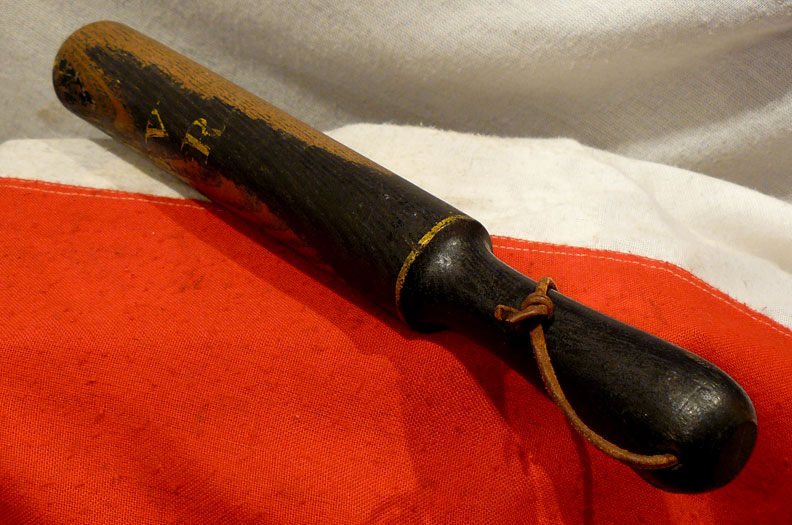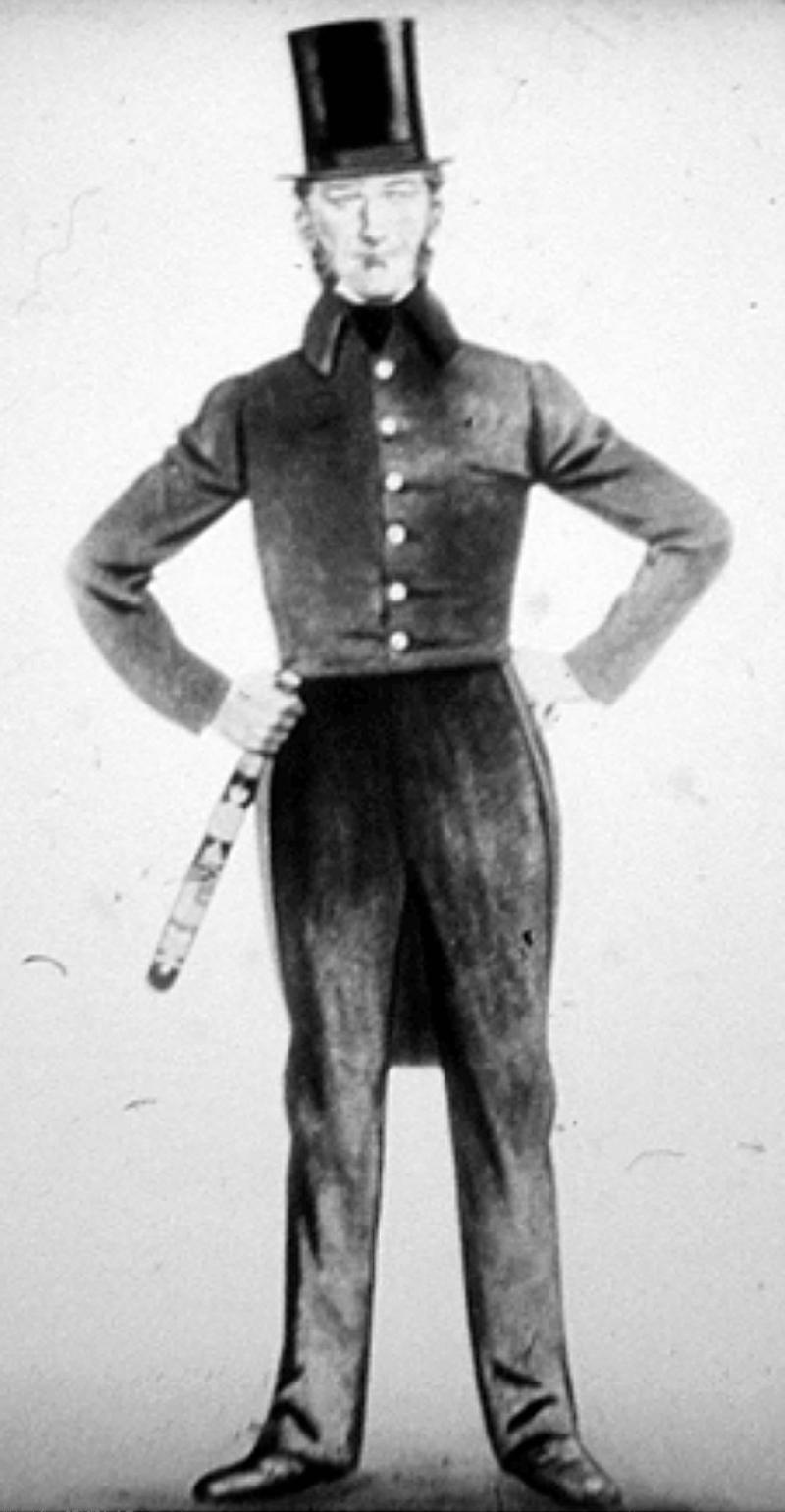A King George IVth Police Tipstaff The Very First Truncheon Issued To Metropolitan Police In The Year of Formation in 1829.
With areas of painted finish lacking. Traditional of uppermost cylindrical form with a turned grip.
The 18th century had been a rough and disorderly age, with mob violence, violent crimes, highwaymen, smugglers and the new temptations to disorder brought about by the Industrial Revolution.
Clearly something had to be done.
In 1829 the Metropolitan Police Force, organised by Sir Robert Peel, was established to keep the order in London.
The force, under a Commissioner of the Police with headquarters at Scotland Yard, was essentially a civilian one: its members were armed only with wooden truncheons and at first wore top-hats and blue frock-coats. The "Peelers" or "Bobbies" were greeted largely with derision by Londoners, but they did become accepted fairly quickly. Their primary purpose, in those days, was to prevent crime, and some London criminals left their haunting grounds of London for the larger provincial towns, which in turn established their own forces on the Metropolitan model. The pattern followed through to the small villages and countryside. To secure co-operation between the spreading network and establish further forces,
Parliament passed an act in 1856 to co-ordinate the work of the various forces and gave the Home Secretary the power to inspect them. In the counties, under the Police Act of 1890, the police became the combined responsibility of the local authorities - the County Councils - and the Justice of the Peace, while in London, the Metropolitan Police at Scotland Yard remained under the Commissioner appointed by the Home Office. At the turn of the century, the British police force established a reputation for humane and kindly efficiency.
Their mere existence undoubtedly did a lot to prevent crime, and they built up what was on the whole a highly effective system of investigation and arrest, that lasted for just over 120 years. However, as Heraclitus, a Greek philosopher, expressing the idea of impermanence around 500 BC once remarked
"Nothing is permanent except change".
Code: 16913
215.00 GBP




